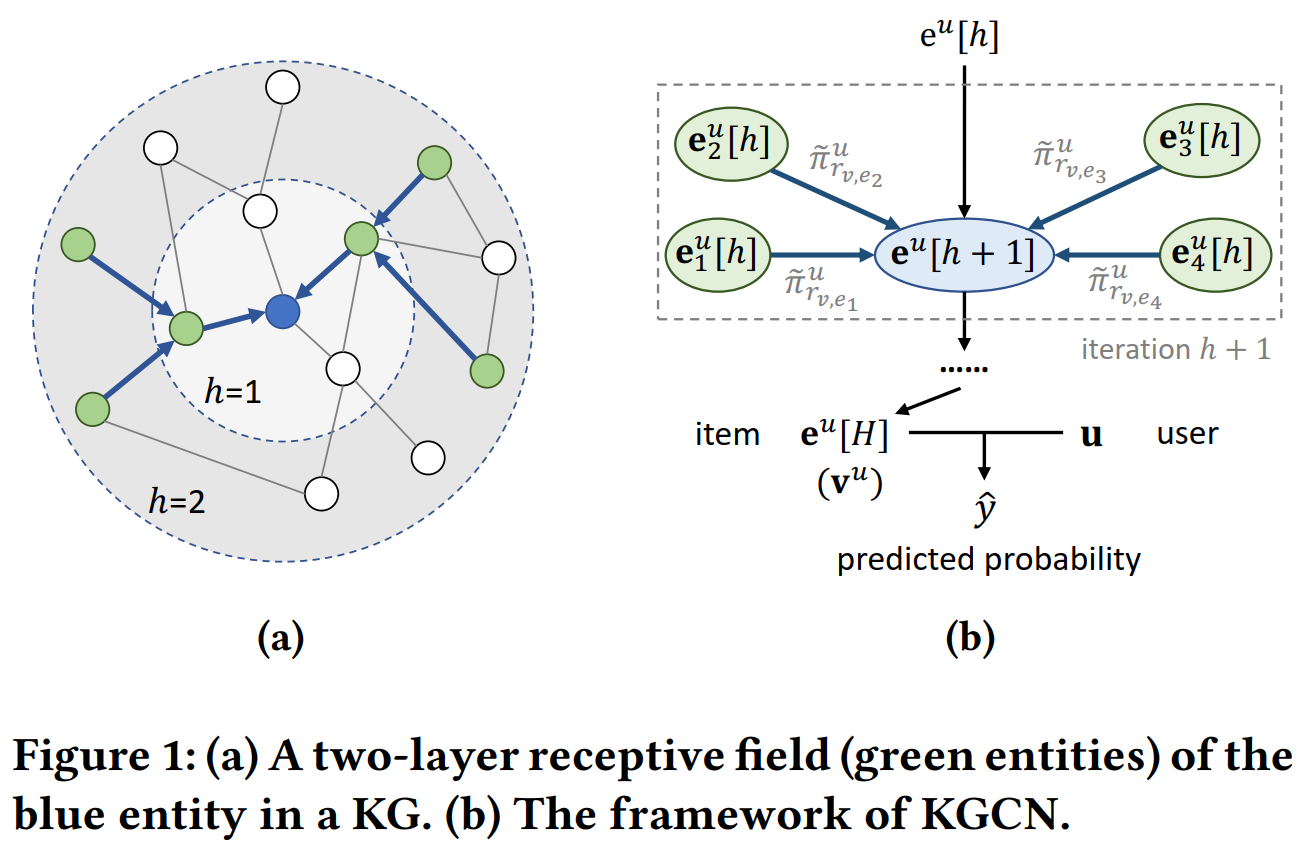KGCN¶
Introduction¶
Title: Knowledge Graph Convolutional Networks for Recommender
Authors: Hongwei Wang, Miao Zhao, Xing Xie, Wenjie Li, Minyi Guo
Abstract: To alleviate sparsity and cold start problem of collaborative filtering based recommender systems, researchers and engineers usually collect attributes of users and items, and design delicate algorithms to exploit these additional information. In general, the attributes are not isolated but connected with each other, which forms a knowledge graph (KG). In this paper, we propose Knowledge Graph Convolutional Networks (KGCN), an end-to-end framework that captures inter-item relatedness effectively by mining their associated attributes on the KG. To automatically discover both high-order structure information and semantic information of the KG, we sample from the neighbors for each entity in the KG as their receptive field, then combine neighborhood information with bias when calculating the representation of a given entity. The receptive field can be extended to multiple hops away to model high-order proximity information and capture users’ potential long-distance interests. Moreover, we implement the proposed KGCN in a minibatch fashion, which enables our model to operate on large datasets and KGs. We apply the proposed model to three datasets about movie, book, and music recommendation, and experiment results demonstrate that our approach outperforms strong recommender baselines.

Running with RecBole¶
Model Hyper-Parameters:
embedding_size (int): The embedding size of users, relations and entities. Defaults to64.aggregator (str): The aggregator used in GNN layers. Defaults to'sum'. Range in['sum', 'neighbor', 'concat'].reg_weight (float): The L2 regularization weight. Defaults to1e-7.neighbor_sample_size (int): The number of neighbors to be sampled. Defaults to4.n_iter (int): The number of iterations when computing entity representation. Defaults to1.
A Running Example:
Write the following code to a python file, such as run.py
from recbole.quick_start import run_recbole
run_recbole(model='KGCN', dataset='ml-100k')
And then:
python run.py
Tuning Hyper Parameters¶
If you want to use HyperTuning to tune hyper parameters of this model, you can copy the following settings and name it as hyper.test.
learning_rate choice [0.01,0.005,0.001,0.0005,0.0001]
Note that we just provide these hyper parameter ranges for reference only, and we can not guarantee that they are the optimal range of this model.
Then, with the source code of RecBole (you can download it from GitHub), you can run the run_hyper.py to tuning:
python run_hyper.py --model=[model_name] --dataset=[dataset_name] --config_files=[config_files_path] --params_file=hyper.test
For more details about Parameter Tuning, refer to Parameter Tuning.
If you want to change parameters, dataset or evaluation settings, take a look at